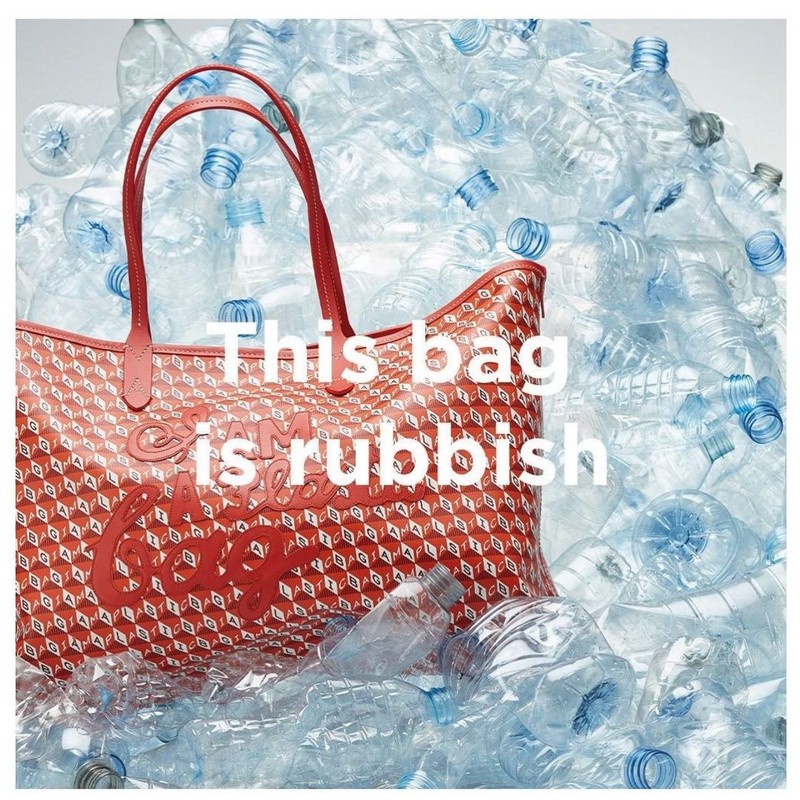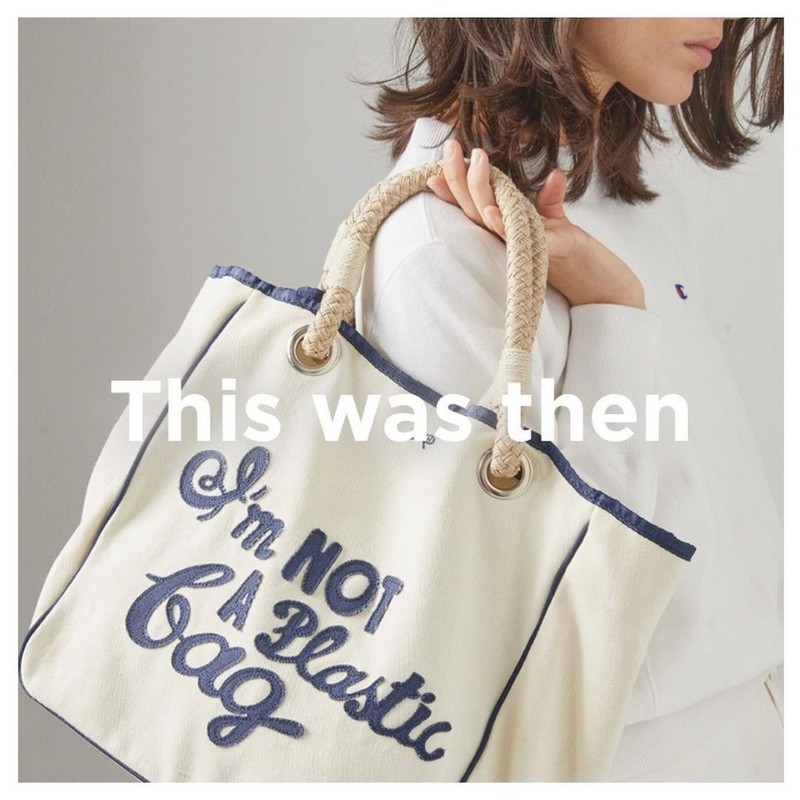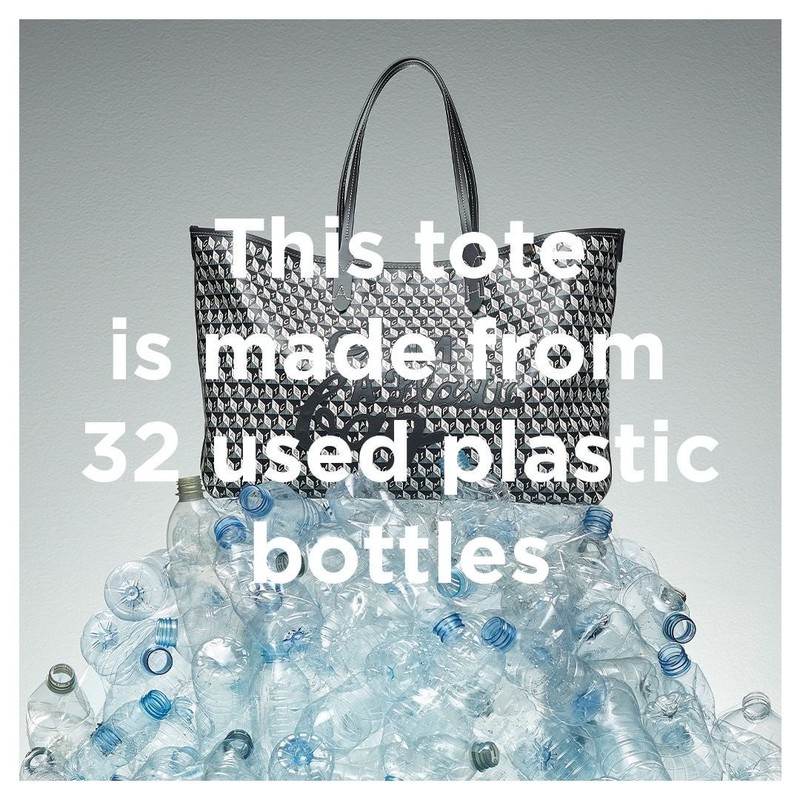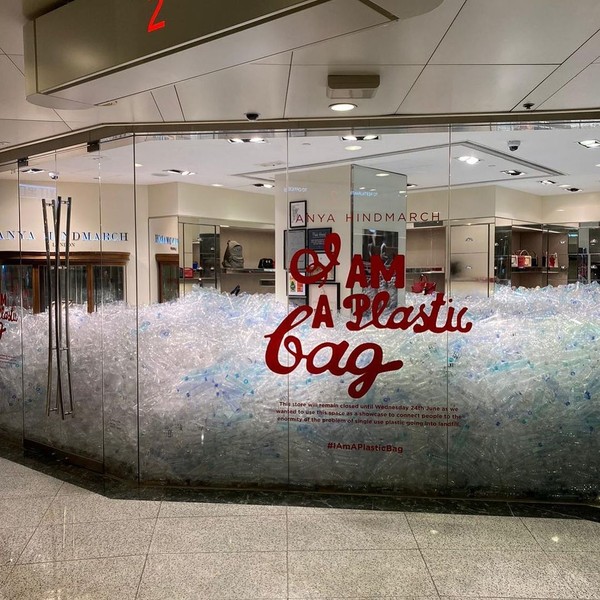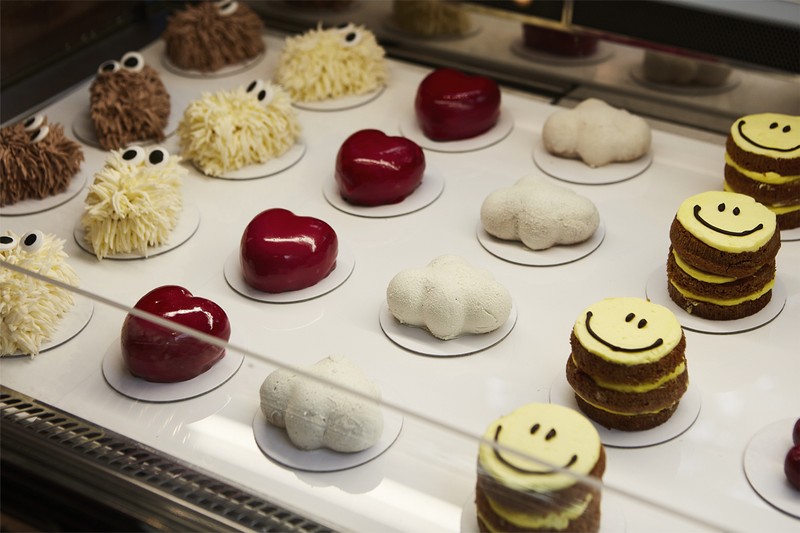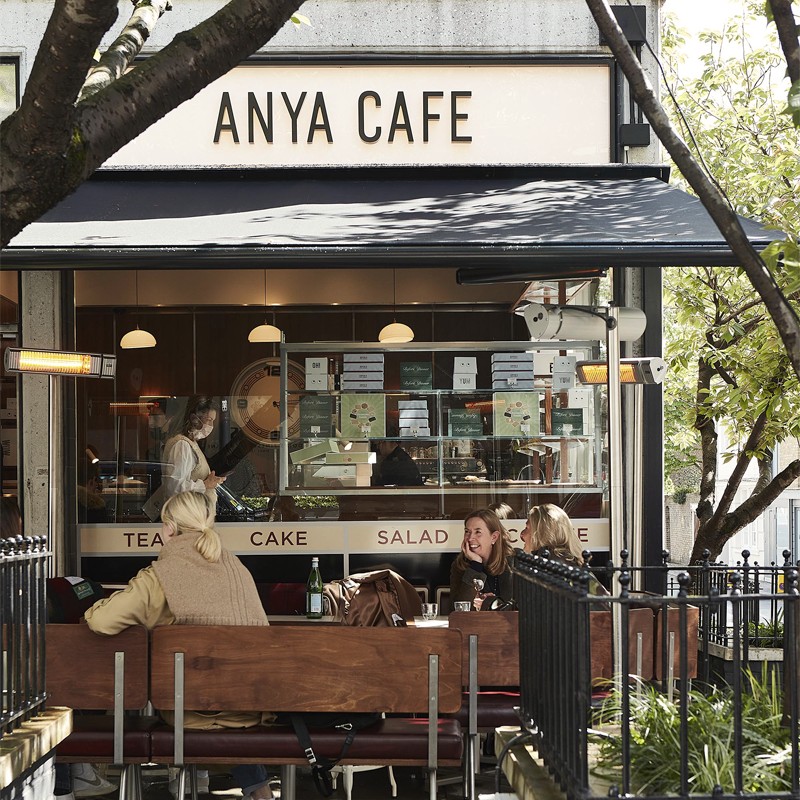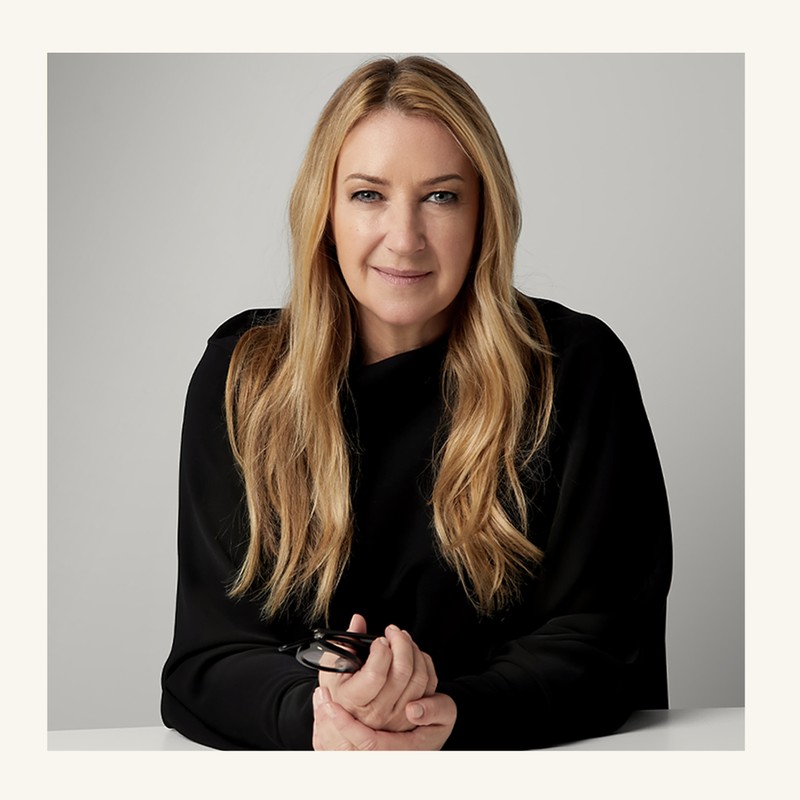
Chapters In My Life: Anya Hindmarch
Chapter One: Growing Up
“I grew up in Essex, about two hours from London, and I was the middle of three children. We were very lucky as we had a nice, gentle and safe sort of childhood, with two loving parents who were ambitious for us and enormously supportive. My father started his own business in plastics, which is ironic as some of my biggest projects have been about reducing the use of plastics. My mother used to help him a bit, but mainly she was a mum. The family business was very much part of my childhood. At school, I wasn’t naturally academic, which I think is a trait of entrepreneurs – you tend to be quite impatient in the classroom and want to push on. When I left school at 18, I wasn’t that keen on spending three years at university and I moved to London. I wanted to crack on and start a business, which was quite hard as all my friends went to university but, for me, it was three years to get ahead.”
Chapter Two: Italy & Starting My Business
“When I was 16, my mother gave me one of her old Gucci handbags and I remember being fascinated by the craftsmanship and how it made me feel – it was all about the mood-changing aspects of fashion really. There was a sense that whenever I wore it, whatever I was wearing, it made me feel glamorous. It was a real confidence boost. After school, I went off to Florence for a couple of months to learn Italian and to discover more about the handbag industry – I wanted to immerse myself in it and felt Florence was very much the home of leather goods. I found a bag I liked, redesigned it a bit and found a factory that made some samples for me. On my return to London, I sold my very first bag to Harpers & Queen magazine – through a friend of mine, whose stepmother worked there. They ran it as their monthly offer which was a good way of getting to the market; we sold 500 bags and I made a profit of £7,000.
“After that I thought I just had to keep going. I started designing a range of handbags and was selling to stores like Harrods as well as Bergdorf Goodman and Neiman Marcus in the States. I was getting orders and realised I had to have collections ready by certain dates and got into managing the wholesale business, all while working from my kitchen table. In 1993, I opened a first-floor shop (I couldn’t afford ground floor!) in Walton Street and from that point on the business grew pretty quickly. In 1996 I opened my first proper store in Pont Street, Chelsea, and progressed from there to having 60 stores all over the world – in New York, Hong Kong, Japan, Malaysia, Singapore, Los Angeles…”
Chapter Three: Getting Married & Children
“I met James [Seymour] through a friend at a dinner party in 1993 and I knew from that first moment that I was going to marry him. He was 37, newly widowed with three small children aged one, three and four. In many ways being with someone 12 years older wasn’t an obvious journey, but when you’re young you’re fearless. It all felt right so we started dating and got married just under three years later. We took our time as it was quite a big step and we had to make sure it was the right thing for his children too.
“We left a gap before we had our own two children together and we now have five in total between 18 and 32. James joined the company when we were expecting our first child – we both had our own companies, and it was just impossible as we were both so busy and thought it was better to put all our energy into one business. He held my seat when I had what felt like all of three minutes off to have that child, and he stayed. It’s really nice working together, which we have done for 21 years now.”
Chapter Four: Family Life
“We put a lot of effort into making sure we all get on as a family. My inherited children are brilliant, and I feel extremely lucky as they are pretty incredible and have been so lovely and kind to the newbies. James does all the cooking, as it’s really not my thing. I am probably not a terrible cook but I decided I was, so it was not where I was going to put my energy. I’m working as hard as my father did, yet I still have the role model of my mother in my head and it’s quite hard to be both while juggling work and family. So you have to come up with solutions to make family life easier. For instance, because we have children with quite disparate ages, the little ones often couldn’t get a word in as the older children were more articulate and more sharp-elbowed. To make sure everyone could be heard, we came up with the idea of ‘the spoon’ – we all love to debate and it can get quite loud and boisterous, even heated at times. If you’re holding the spoon, you’re allowed to finish what you’re saying. And that worked well to balance things out at the family table.
“Another solution that became a lifesaver was called ‘beat the clock’ – when you’re working every day and your teenage children want to have a wild old night, probably drinking quite a lot, you don’t want to be lying awake listening out for them and checking your phone every five seconds to see if they’re in A&E! It’s all about trying to square the circle of being fair to them but also being realistic about what you can manage if you have an important board meeting the next morning. To their credit, they came up with the idea that I would set an alarm at an agreed and quite generous curfew time. The deal was they had to get home to turn the alarm off by my bed before it went off. There’s no negotiation, no ‘can I stay a bit longer?’ or ‘I can’t get a taxi’. And it worked because it meant I could sleep properly knowing I had a definite wake-up point if that alarm went off.
“We made lots of those little traditions which worked quite well. Some of the children allowed me to add them on Follow My Friend as they knew I was quite neurotic. Even though they were at university, and I had no control if they were taking drugs or sleeping with someone, I liked to know they were safe. Of course, there was the odd disaster. One time, according to the sat nav, my son was floating in a lake in a dark field somewhere. Another time one of them told me he wasn’t coming to London and was going to Cornwall with friends, but six hours later the app said he was in London, which I thought was very odd and I was really concerned. It transpired his phone had dropped out of his pocket in his friend’s father’s car and he had driven back to London. It just shows that you have to trust your children as well!
“We did have a few very frightening years when our eldest, Hugo, was 19 and developed a melanoma and the cancer kept coming back. He is completely cured now, thank goodness, but it does make you recalibrate a few things and, if there was a silver lining, it is that it has made us all very close. But it certainly makes you rethink your priorities which is a nice by-product of a very horrible time.”
Chapter Five: Selling Part Of The Business
“One of the things I love in business is the creativity. But as chairman, CEO and creative director – and with five children all at different schools – life was incredibly busy. I wanted to reduce my role and, in 2011, I took the big step of selling part of the business, with a new CEO running the company while I focused on the creative side. Sometimes it is important to bring in professionals and I have to say they were incredibly clever people but, by 2019, I finally understood that I like to be in charge and really like running my own ship, so we bought back the business. It was a strange thing to go through, but it was the right thing for me at the time. Often, founders believe they have to bring in big professionals, but I don’t think that is always necessary. Just because you started the business without experience doesn’t mean you need the professionals – you eventually work out that you know more than you think, even if you haven’t trained or qualified, because you learn a lot more on the job than you realise.”
Chapter Six: ‘I’m Not A Plastic Bag’
“Fashion with purpose is what really interests me – that is definitely my happy place. My biggest passions have been the ‘I’m Not A Plastic Bag’ project in 2007 and then, in 2020, ‘I Am A Plastic Bag’. The first was ground-breaking and became a pivotal project. By the mid-noughties, Al Gore’s book An Inconvenient Truth was out and people were starting to hear the word ‘environment’. As an individual, I wasn’t sure what I could do to make a difference, but I had a lightbulb moment when I was approached by an organisation called We Are What We Do (now known as Shift). It’s a social change movement that had brought out a book called Change The World For A Fiver which contained 50 ideas, one of which was ‘Decline plastic bags wherever possible’.
“I realised I could make a difference by using the platform of fashion to promote that idea and designed a canvas tote with ‘I’m NOT A Plastic bag’ stitched on the front. We priced it at £5 to reflect the title of the book and launched it in the ‘golden circle’ of fashion-forward stores – Colette in Paris, Dover Street Market in London, Isetan in Tokyo – and used the ‘It bag formula’ of putting it on the right celebrity arms. We then worked with Sainsbury’s, as we wanted to go to the source of the problem. They were brilliant – they were giving out single-use plastic bags, but they wanted to change and were really brave. The combination of the cause, scarcity of product and the £5 price tag meant the first lot of 20,000 bags sold out in an hour, with 80,000 queuing for it at Sainsbury’s on launch day.
“It got even bigger around the world: in Taiwan, there was a massive stampede; in Tokyo people queued overnight across streets and around blocks. The hype we created was incredible and the great thing about it, despite the madness of it all, is that people really wanted to help and make a difference – in fact, the British Retail Consortium estimated that plastic bag consumption in 2006 was 10.6 billion and by 2010 that had dropped to 6.1 billion. We had achieved something, and it also encouraged legislation which saw charges being brought in for single-use plastic bags.”
Chapter Seven: ‘I Am A Plastic Bag’
“Just before Covid in 2020, I had gone full circle. A decade after my ‘I Am Not A Plastic Bag’ project, the problem had not gone away and I decided we needed to look at it again. There is something like 8 billion tonnes of plastic on the planet, and it’s no longer about awareness, which was what the first project was about. This time it was about turning that plastic into something we want to keep so it doesn’t end up in landfill.
“Back in 2007, I remember someone saying to me that when you throw something away, there is no ‘away’ – it was such an obvious statement which had been going round and round in my head. I often think that if I had to bury everything I couldn’t recycle in my garden in London, I would soon find another way and stop burying the plastic. It’s so easy to throw something in the bin and then not worry about it or the consequences. So, we spent two years in R&D working on this amazing product which feels like a beautiful canvas drill but is actually made from recycled PET [polyethylene terephthalate] bottles. However, it marked and got dirty like cotton so we had to develop a coating on one side which we managed to make from the recycled laminate that is used between the layers of glass in a windscreen to stop it shattering. It was a complicated project, with a lot of learning, but it was fascinating.
“And so, the ‘I Am A Plastic Bag’ was launched during Fashion Week in February 2020. Instead of having a show, we closed our stores and filled them with 90,000 used plastic bottles which everyone in the company was tasked with sourcing. It was part protest and part art installation, which represented just six seconds of global plastic consumption – the aim being to connect people to a visual representation of how we are all behaving and how we are all disconnected.”
Chapter Eight: ‘If In Doubt, Wash Your Hair’
“This is the title of my book that came out in May this year. It came about because, over the years, I’ve given many talks about my career and how I manage to juggle being a mother, stepmother, entrepreneur and woman in business. But the thing people, mainly women, always want to discuss with me afterwards is self-doubt and how I cope with it. The advice I always give – jokingly – is: ‘If in doubt, wash your hair.’ This resonates with most women, as we all know that when you feel good about yourself, you stand taller, you look people in the eye and it makes a huge difference. Doubt is fascinating because I think most people have doubt but don’t believe others do. I know for a fact that prime ministers have doubt, everyone has doubt: it’s there on our shoulders to keep us safe and to make us better versions of ourselves.
“I just wanted to write about everything that’s helped me in my 53 years – big things, little things, silly things. It’s not a business book, it’s not a memoir, it’s not a self-help book and it’s not a fashion book for sure! I hope it’s the kind of book I’d give my goddaughter – I’m not sure everything in it is right but, if something has helped me, it might help someone else. When I started writing, I thought it would be like writing nine essays, and I didn’t think I would find it that hard, but I did and I had to be quite disciplined about sitting down at my desk and getting it out. I worked on it last summer mainly, during lockdown, but I had worked on the content and chapters the year before so I knew what I wanted to write.”
Chapter Nine: Lockdown
“The business was busy from the moment we locked down in March last year. As everything was closing, we had to make a lot of very difficult decisions – we had to reforecast, cut costs, adjust salaries and furlough staff. Luckily, we have a strong digital business but everyone was quite scared. We got involved in a few projects such as making hospital PPE gowns for the Royal Marsden and St George’s Hospital in London; we also produced ‘holdsters’ for intensive care staff across the UK so they could carry their phones, pens and glasses around with them. Doing these gave us pleasure. I hate to talk about Covid in a positive way because it has been such a dreadful experience for so many. I acknowledge total privilege because I was lucky. For me it was a chance to spend some time with three of my children, step off the conveyor belt, rethink and work out what really matters. Not having to jump on a plane, dash across town to endless meetings and just being able to settle down was an amazing moment, and I think a lot of us don’t want go back to the race as it was. I think we’ll all work remotely a bit and that’s no bad thing for us as individuals or for the planet.
Chapter Ten: The Village
“When we bought the business back, it seemed obvious that having 60 stores across the world was not so modern anymore. We live in a digital world and there’s no point having the same offering online and in store, so I closed a lot of the stores and now just have Hong Kong, Tokyo and London. The word ‘local’ has been going round and round in my head. Post Covid and with the planet situation we are all facing and having to work out a way through, I think we are going to go from global to local. The idea of globalisation had been the backdrop of my business for so long – global supply chains, global distribution and so on – but does feel a little uncomfortable now and I think we need to go back to basics.
“I felt I wanted to go back to my roots in Pont Street and create a retail world that offered something you couldn’t get online and a reason to visit. The Village opened just when lockdown ended earlier this year and is a collection of five neighbouring Anya stores, a real community: we have the Anya Café where you can have fun; the Hall had a hair salon (to celebrate my book) for a few weeks and is currently home to the Anya Fruit & Veg Store until 25th September; the Plastic Store focuses on issues of sustainability, circularity and the reduction of plastic consumption, and houses the ‘I Am A Plastic Bag’ collection; the Labelled Store sells my collection of recycled nylon cases and bags that are, quite literally, labelled to keep you organised; and the Bespoke Store offers personalised pieces designed to last a lifetime and be handed down through the generations.
The Next Chapter…
“Creativity is what gets me out of bed every day, and we’re always looking into new product areas – for instance, we will be launching a small home range in November. I’ve got a million projects going on and, with my obsession for fashion with purpose, I’m focusing on things that make a difference – it’s where I feel happiest. The UN report that came out last month is absolutely terrifying and we are all going to have to change the way we behave. Covid has shown us that we can change and there will have to be some sacrifice going forward, and it’s going to have to happen very fast. I’m also a trustee of the Royal Marsden Cancer Charity so have some lovely projects coming up with them, too. The future is super busy.”
Anya’s book If In Doubt, Wash Your Hair: A Manual for Life was published on 6th May 2021 and is available at all good bookshops and online.
Visit AnyaHindmarch.com
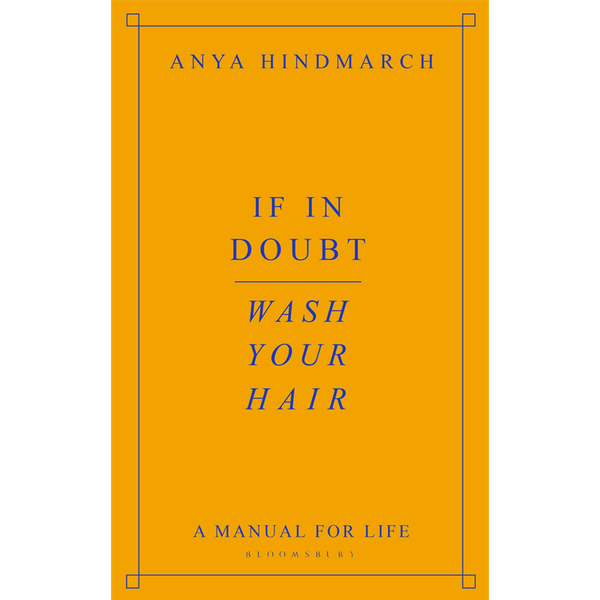
DISCLAIMER: We endeavour to always credit the correct original source of every image we use. If you think a credit may be incorrect, please contact us at info@sheerluxe.com.
